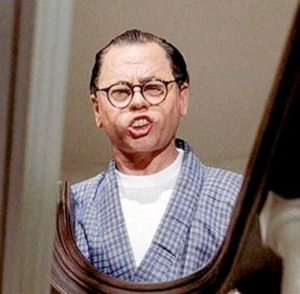

As a card-carrying baby boomer (I guess officially, with my AARP membership!), I was 10 when most of 1968 happened. It was a pivotal year, no doubt -- though in my consciousness, '69 left a deeper impact. AARP magazine does a fine job of using the Web as a story-telling device to revisit the year. This online special section kicks...
Interesting exercise in nostalgia with irony: KCUV-FM in Denver is celebrating the official kickoff of summer by recreating the sound of Denver's FM radio from 1967, complete with news items, radio commercials from back then, and typical playlsists, all presented by the airstaff of progressive radio from the time, including guys like Bill Clarke (who's on Channel 7 now but...
 Audrey Hepburn, one of the great, classic actresses of Hollywood of the '50s and '60s, may have died in 1993, but she's alive and well in American pop culture. Her name, and the 1961 film with which her face is most associated, "Breakfast at Tiffany's," came up in conversation a couple of weeks ago, and coincidentally, a TV series' plot later that week involved three women dressed as Hepburn's character from "Tiffany's," Holly Golightly, robbing a bank with her trademark sunglasses hiding their identity.
This week, The Gap began airing a pretty cool TV commercial that takes a Hepburn dance sequence from her 1957 musical co-starring Fred Astaire, "Funny Face," and sets her moves to AC-DC's "Back in Black." The commercial is pushing the retailer's new line of skinny black pants. Hepburn's character, a Greenwich Village beatnik who becomes a Paris model, is wearing hip skinny black pants in the dance scene.
Audrey Hepburn, one of the great, classic actresses of Hollywood of the '50s and '60s, may have died in 1993, but she's alive and well in American pop culture. Her name, and the 1961 film with which her face is most associated, "Breakfast at Tiffany's," came up in conversation a couple of weeks ago, and coincidentally, a TV series' plot later that week involved three women dressed as Hepburn's character from "Tiffany's," Holly Golightly, robbing a bank with her trademark sunglasses hiding their identity.
This week, The Gap began airing a pretty cool TV commercial that takes a Hepburn dance sequence from her 1957 musical co-starring Fred Astaire, "Funny Face," and sets her moves to AC-DC's "Back in Black." The commercial is pushing the retailer's new line of skinny black pants. Hepburn's character, a Greenwich Village beatnik who becomes a Paris model, is wearing hip skinny black pants in the dance scene.

This website uses cookies to improve your experience. We\'ll assume you\'re ok with this, but you can opt-out if you wish. Read More


